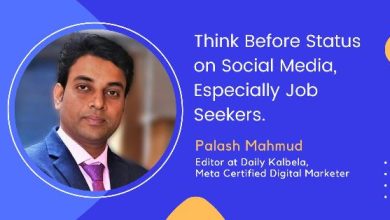Role of Civil Society in Bangladesh’s Battle against Hypertension

Hypertension, often referred to as the “silent killer,” has become a pressing public health concern in Bangladesh. With its high prevalence and far-reaching impacts on individuals and the healthcare system, the need for a concerted effort to tackle this issue is urgent. Civil society has emerged as a pivotal player in addressing such challenges, offering innovative solutions, mobilizing communities, and influencing policy. This article explores the multifaceted role of civil society in Bangladesh’s battle against hypertension.
Understanding Hypertension in Bangladesh
Hypertension affects a significant portion of Bangladesh’s adult population. Contributing factors include urbanization, unhealthy dietary habits, sedentary lifestyles, stress, and limited access to preventive healthcare. Despite its prevalence, awareness about hypertension remains low, and many people remain undiagnosed until complications arise. This lack of awareness and the limited healthcare infrastructure pose substantial barriers to effective management and prevention.
Highlights
- 34.4 % prevalence of hypertension.
- Significant prevalence of hypertension among individuals who used to take inadequate fruits and vegetables.
- Hypertension had a significant correlation with smoking.
Civil Society in Bangladesh
Bangladesh has a vibrant civil society landscape, encompassing NGOs, community-based organizations (CBOs), advocacy groups, and citizen forums. Historically, civil society has played a crucial role in addressing social, political, and health-related issues. NGOs, in particular, have been instrumental in bridging the gap between communities and healthcare systems, often addressing areas where governmental efforts are insufficient. Organizations like BRAC and icddr,b have set benchmarks in delivering health interventions and promoting awareness.
Don’t Miss Out The Stories:
- Signs of Used Cooking Oil: Degradation – Health Hazards, Regulations & Compliances
- Food Safety Guidelines for Successful Restaurants
- Love Fades in Japan: IPSOS Survey Reveals
- Which Is the Safest Toothpaste? A Guide to Choosing the Best for Your Oral Health
Defining Civil Society in Bangladesh: Role of NGOs
NGOs have been at the forefront of public health initiatives in Bangladesh. Their work includes organizing health awareness campaigns, providing community-based healthcare, and advocating for policy changes. These organizations act as intermediaries, connecting marginalized communities with essential healthcare services and promoting equity in healthcare delivery.
Civil Society’s Role in Tackling Hypertension
Civil society organizations have demonstrated their potential in combating hypertension through various initiatives:
Awareness and Education Campaigns
Civil society groups organize workshops, seminars, and public health campaigns to educate people about the risks and management of hypertension. They leverage social media, local events, and grassroots networks to disseminate information and encourage healthy lifestyle choices.
Community-Based Health Programs
Collaborations between NGOs and community health workers enable free health check-ups, blood pressure monitoring, and counseling. These initiatives bring healthcare to underserved populations, ensuring early detection and management of hypertension.
Advocacy and Policy Influence
Civil society organizations lobby for affordable treatment options, better access to healthcare, and policies that prioritize non-communicable diseases like hypertension. They also advocate for research and innovations in healthcare delivery.
Case Studies and Examples
Case Study 1: Stakeholder Committees (1998–2003)
The Government of Bangladesh’s five-year plan—the Health and Population Sector Program 1998–2003—highlighted the importance of stakeholder consultation and participation. The Ministry of Health and Family Welfare established stakeholder committees of local resident service users to monitor the performance of public service providers at the local level. NGOs, such as Nijera Kori, were instrumental in setting up these committees, leveraging their strong community networks.
Nijera Kori and other NGOs, including Voluntary Health Service Society, BRAC, and Bangladesh Mahila Parishad, were tasked with forming community-level stakeholder committees in nine districts on an experimental basis. These committees were designed to include diverse membership, emphasizing inclusivity: 50% women, members from landless groups, professionals, teachers, and union representatives. To prevent conflicts of interest, doctors and medical staff were excluded from membership but were occasionally invited to meetings.
Nijera Kori also provided training in participation and deliberation, ensuring that committee meetings were structured and productive. The committees succeeded in raising community awareness about health facilities, increasing demand for services, and pressuring doctors to adhere to ethical practices, such as arriving on time and refraining from levying illegal fees. However, these committees faced challenges such as limited authority, low community awareness, and insufficient official recognition. While their impact was positive, most committees were disbanded after 2005 due to the lack of support in the new health policy, except those run by Nijera Kori.
Case Study 2: Village Community Groups
As part of the Health and Population Sector Program 1998–2003, the Ministry of Health and Family Welfare established community-owned and managed primary health clinics in every village. These clinics delivered an “essential services package” that merged reproductive and primary health services. Community “ownership” was encouraged through land donations for health centers and shared construction costs with the government. The government covered health worker salaries, while the community was responsible for maintenance.
The elected Union Parishad Chairman, through local consultation, recruited members of Village Community Groups to manage these centers. Unlike the stakeholder committees, medical professionals were included in the groups. However, the selection process was prone to elite capture, favoring well-off members and limiting community acceptability. Members, often close associates of local leaders, lacked understanding of their roles, resulting in poor leadership and meeting structures. Structural inequalities persisted, with women and the poor excluded from meaningful participation.
Without adequate support or credibility from local authorities, the groups struggled to mobilize resources, leading to infrastructure deterioration and inadequate supplies. By 2001, all 10,000 clinics had fallen into disuse. These models have since been replaced by the Health, Nutrition, and Population Sector Program and Health Services User’s Fora, although data on their performance is limited.
Case Study 3: Bangladesh Health Equity Watch and Health Watch
Bangladesh Health Equity Watch (BHEW) emerged from the Global Health Equity Initiative, coordinated by the Bangladesh Bureau of Statistics, the Bangladesh Institute of Development Studies, BRAC, and ICDDR’B. BHEW conducts national surveys on health equity, analyzes data with a focus on equity, advocates for better healthcare policies, and builds capacity in survey research. Its work highlights disparities in healthcare access and raises awareness about inequalities.
In 2005, similar efforts led to the creation of Bangladesh Health Watch, housed at the BRAC School of Public Health. This network systematically measures Bangladesh’s health performance and publishes annual reports focusing on specific themes, such as health equity. Governed by an advisory board and a working group, Bangladesh Health Watch combines professional oversight with civil society advocacy to influence health policy and raise awareness.
While the direct impact of these initiatives is challenging to quantify, their emphasis on data-based decision-making has helped incorporate equity considerations into healthcare policies and mitigate elite capture in policy dialogues. By providing critical analyses and fostering informed advocacy, these organizations ensure that healthcare policies address the needs of the most vulnerable populations.
Challenges Faced by Civil Society
Despite their critical role, civil society organizations face several challenges in combating hypertension:
- Limited Funding and Resources: Scaling up initiatives requires significant investment, which is often lacking.
- Coordination Gaps: Effective collaboration with government agencies and international partners remains a challenge.
- Cultural Barriers: Resistance to lifestyle changes and stigmas associated with health issues hinder progress, especially in rural areas.
Recommendations and Future Roadmap
To enhance the impact of civil society in tackling hypertension, the following steps are recommended:
Strengthening Partnerships
Collaboration between civil society organizations, the government, and private sectors can amplify the reach and effectiveness of hypertension initiatives.
Leveraging Technology
Mobile health apps, telemedicine services, and digital campaigns can improve awareness and facilitate hypertension management, even in remote areas.
Encouraging Youth Participation
Engaging schools, colleges, and youth organizations in awareness campaigns can foster a proactive approach to hypertension prevention among younger generations.
Ensuring Sustained Funding
Establishing public-private partnerships and seeking international funding can provide the financial stability needed for long-term projects.
Conclusion
The battle against hypertension in Bangladesh requires collective efforts from all sectors of society. Civil society, with its grassroots reach, innovative approaches, and advocacy strength, plays a crucial role in this fight. By fostering partnerships, overcoming challenges, and scaling up successful initiatives, civil society can pave the way for a healthier Bangladesh, free from the silent threat of hypertension.
Written by Mr. Tofazzal Hossain-The author is a CEO, Legacy Care Solutions. Views expressed are personal and do not reflect the official position or policy of the CnewsTODAY.com.



